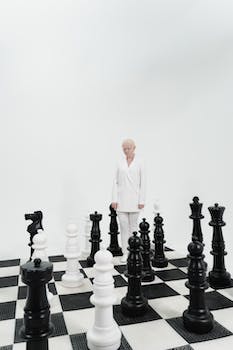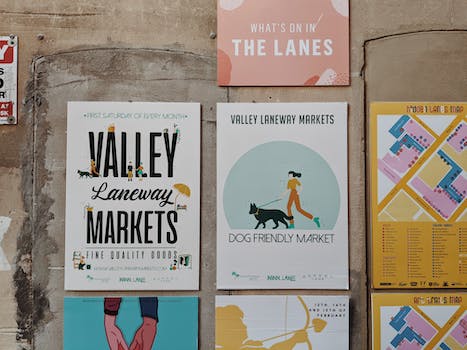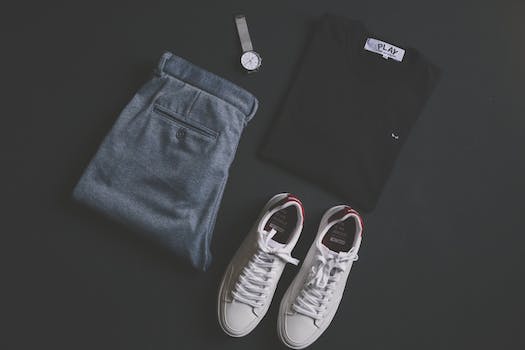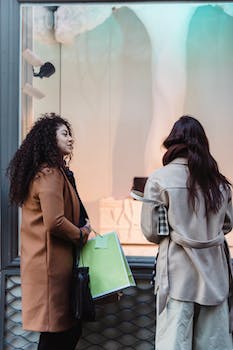

-
Table of Contents
Celebrating Diversity, Empowering Style
Introduction
Introduction:
The intersection of fashion and body positivity is a fascinating and important area to explore. In recent years, there has been a growing movement towards inclusivity and acceptance of diverse body types in the fashion industry. This shift challenges traditional beauty standards and promotes a more inclusive and empowering approach to fashion. By examining the relationship between fashion and body positivity, we can gain insights into the impact of clothing on self-esteem, body image, and overall well-being. This exploration allows us to understand how fashion can be a powerful tool for promoting body positivity and fostering a more inclusive society.
The Evolution of Body Positivity in the Fashion Industry
The fashion industry has long been criticized for its narrow and unrealistic beauty standards. For decades, the industry has perpetuated an idealized image of thinness, leading to body dissatisfaction and low self-esteem among many individuals. However, in recent years, there has been a significant shift towards body positivity in the fashion industry. This movement aims to challenge and redefine traditional beauty standards, promoting inclusivity and acceptance of all body types.
The evolution of body positivity in the fashion industry can be traced back to the early 2000s when a few trailblazing designers and models began to challenge the status quo. They started featuring models of different sizes, ethnicities, and ages on the runway and in advertising campaigns. This marked a departure from the industry's long-standing obsession with thinness and signaled a new era of diversity and inclusivity.
One of the key turning points in the body positivity movement was the emergence of social media platforms. With the rise of Instagram and other image-sharing platforms, individuals were given a platform to express themselves and showcase their unique beauty. Influencers and bloggers began to challenge traditional beauty standards by sharing their personal stories and promoting body acceptance. This grassroots movement gained momentum and forced the fashion industry to take notice.
In response to the growing demand for more diverse representation, many fashion brands started to expand their size ranges and offer more inclusive options. Plus-size models, once marginalized and overlooked, began to gain recognition and visibility. This shift in the industry's approach to body diversity was a significant step towards dismantling the narrow beauty standards that had been perpetuated for so long.
Furthermore, the body positivity movement has also influenced the way fashion is marketed and advertised. Brands are now embracing a more inclusive approach by featuring models of different sizes, ages, and ethnicities in their campaigns. This shift not only reflects the changing attitudes towards beauty but also resonates with consumers who are seeking authenticity and relatability in the brands they support.
However, it is important to acknowledge that the fashion industry still has a long way to go in terms of fully embracing body positivity. While progress has been made, there is still a lack of representation for certain body types, particularly those that fall outside the conventional beauty standards. Additionally, the industry's focus on diversity and inclusivity can sometimes be seen as a marketing ploy rather than a genuine commitment to change.
In conclusion, the evolution of body positivity in the fashion industry has been a significant step towards challenging and redefining traditional beauty standards. The movement has forced the industry to confront its narrow-mindedness and embrace a more inclusive approach. However, there is still work to be done to ensure that all body types are represented and celebrated. By continuing to push for diversity and inclusivity, the fashion industry can play a crucial role in promoting body acceptance and self-love.
How Fashion Brands are Embracing Diversity and Inclusivity
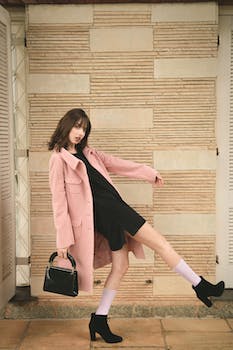
In recent years, the fashion industry has been undergoing a significant transformation. Gone are the days when the industry solely focused on promoting unrealistic beauty standards and catering to a narrow range of body types. Today, fashion brands are embracing diversity and inclusivity like never before, recognizing the importance of representing and celebrating all body shapes, sizes, and ethnicities.
One way in which fashion brands are embracing diversity is by featuring a more diverse range of models in their campaigns and runway shows. In the past, the industry was notorious for its lack of representation, with models being predominantly white, thin, and tall. However, in recent years, we have seen a shift towards a more inclusive approach. Brands are now casting models of different ethnicities, sizes, ages, and abilities, reflecting the diversity of their customer base.
This shift towards inclusivity is not just limited to the models themselves but also extends to the clothing and designs being showcased. Fashion brands are now creating collections that cater to a wider range of body types. Plus-size fashion, for example, has seen a surge in popularity, with brands recognizing the demand for stylish and trendy clothing in larger sizes. This shift is not only empowering for those who have traditionally been excluded from the fashion industry but also sends a powerful message to society about the importance of embracing and celebrating all body types.
In addition to featuring a more diverse range of models and creating inclusive clothing, fashion brands are also taking steps to promote body positivity in their marketing and advertising campaigns. They are moving away from heavily retouched images and embracing a more natural and authentic approach. This shift is not only more relatable to consumers but also helps to challenge the unrealistic beauty standards that have been perpetuated by the industry for far too long.
Furthermore, fashion brands are also collaborating with influencers and activists who are leading the body positivity movement. These collaborations help to amplify the message of self-acceptance and body positivity, reaching a wider audience and encouraging individuals to embrace their bodies as they are. By partnering with individuals who have a strong following and a genuine passion for promoting body positivity, fashion brands are able to make a real impact and inspire positive change.
It is important to note that while progress has been made, there is still work to be done. The fashion industry has a long history of exclusion and discrimination, and it will take time to fully dismantle these systems. However, the fact that fashion brands are actively embracing diversity and inclusivity is a step in the right direction. By challenging traditional beauty standards and celebrating all body types, the industry is sending a powerful message that beauty comes in all shapes, sizes, and colors.
In conclusion, the intersection of fashion and body positivity is an exciting and transformative space. Fashion brands are embracing diversity and inclusivity by featuring a more diverse range of models, creating inclusive clothing, promoting body positivity in their marketing campaigns, and collaborating with influencers and activists. While progress has been made, there is still work to be done. However, the industry's shift towards embracing all body types is a step in the right direction, challenging traditional beauty standards and promoting self-acceptance.
The Impact of Body Positivity on Fashion Trends and Styles
The fashion industry has long been criticized for its narrow standards of beauty, promoting unrealistic body ideals that can have a detrimental impact on individuals' self-esteem and body image. However, in recent years, there has been a significant shift towards body positivity within the fashion world. This movement aims to celebrate and embrace all body types, challenging the traditional norms and promoting inclusivity. As a result, we have witnessed a transformation in fashion trends and styles, with designers and brands embracing diversity and catering to a wider range of body shapes and sizes.
One of the most noticeable impacts of the body positivity movement on fashion is the increased representation of diverse body types in advertising and media. Gone are the days when only slim, tall models graced the covers of fashion magazines. Nowadays, we see a more inclusive representation of beauty, with models of different sizes, ethnicities, and ages being featured prominently. This shift has not only helped to boost the self-esteem of individuals who do not fit into the traditional beauty standards but has also allowed them to see themselves reflected in the fashion industry.
In addition to increased representation, the body positivity movement has also influenced the design and production of clothing. Designers are now creating garments that cater to a wider range of body shapes and sizes, ensuring that everyone can find stylish and flattering clothing options. Plus-size fashion has seen a significant growth, with dedicated brands and designers focusing on creating trendy and fashionable clothing for curvier individuals. This shift has not only made fashion more accessible but has also challenged the notion that certain body types are more fashionable or desirable than others.
Furthermore, the body positivity movement has encouraged individuals to embrace their own unique style and express themselves through fashion. It has empowered people to break free from societal expectations and wear what makes them feel confident and comfortable, regardless of their body shape or size. This newfound freedom has led to a more diverse and eclectic fashion landscape, with individuals experimenting with different styles, colors, and patterns. Fashion is no longer about conforming to a specific ideal but about celebrating individuality and personal expression.
However, it is important to note that the body positivity movement is not without its challenges. While progress has been made, there is still a long way to go in terms of true inclusivity and representation. Many individuals still feel excluded or marginalized by the fashion industry, as certain body types continue to be underrepresented. Additionally, the movement has faced criticism for its commercialization, with some brands using body positivity as a marketing tool without truly embracing its principles.
In conclusion, the body positivity movement has had a profound impact on fashion trends and styles. It has challenged the traditional beauty standards and promoted inclusivity, resulting in increased representation of diverse body types in advertising and media. Designers are now creating clothing that caters to a wider range of body shapes and sizes, making fashion more accessible and inclusive. Moreover, the movement has empowered individuals to embrace their own unique style and express themselves through fashion. While progress has been made, there is still work to be done to ensure true inclusivity and representation within the fashion industry.
Q&A
1. How does fashion contribute to body positivity?
Fashion can contribute to body positivity by promoting inclusivity and diversity in its designs, campaigns, and runway shows.
2. Why is it important to explore the intersection of fashion and body positivity?
Exploring the intersection of fashion and body positivity is important because it challenges societal beauty standards, promotes self-acceptance, and encourages individuals to embrace their unique bodies.
3. What are some examples of fashion brands that actively promote body positivity?
Some examples of fashion brands that actively promote body positivity include Aerie, Savage x Fenty, and Chromat.
Conclusion
In conclusion, exploring the intersection of fashion and body positivity is crucial in promoting inclusivity and self-acceptance. By challenging traditional beauty standards and embracing diverse body types, the fashion industry can empower individuals to feel confident and comfortable in their own skin. This intersection allows for the creation of clothing that celebrates and caters to a wide range of body shapes and sizes, fostering a more inclusive and representative fashion landscape. Ultimately, embracing body positivity in fashion can have a positive impact on individuals' self-esteem and overall well-being.


